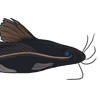/siluriformes/loricariidae/panaqolus/albivermis/1.jpg)
/siluriformes/loricariidae/panaqolus/albivermis/2.jpg)
/siluriformes/loricariidae/panaqolus/albivermis/3.jpg)
/siluriformes/loricariidae/panaqolus/albivermis/4.jpg)
/siluriformes/loricariidae/panaqolus/albivermis/5.jpg) Pair prepare to spawn
Pair prepare to spawn/siluriformes/loricariidae/panaqolus/albivermis/6.jpg)
/siluriformes/loricariidae/panaqolus/albivermis/7.jpg) One year old
One year old/siluriformes/loricariidae/panaqolus/albivermis/8.jpg)
/siluriformes/loricariidae/panaqolus/albivermis/9.jpg) Close-up of head
Close-up of head/siluriformes/loricariidae/panaqolus/albivermis/10.jpg) Close-up of male's odontodes
Close-up of male's odontodes/siluriformes/loricariidae/panaqolus/albivermis/11.jpg) Male
Male/siluriformes/loricariidae/panaqolus/albivermis/12.jpg) Female
Female/siluriformes/loricariidae/panaqolus/albivermis/13.jpg) Ventral view of adult
Ventral view of adult/siluriformes/loricariidae/panaqolus/albivermis/14.jpg) Dorsal view
Dorsal view/siluriformes/loricariidae/panaqolus/albivermis/15.jpg) Adult
Adult/siluriformes/loricariidae/panaqolus/albivermis/16.jpg) Juvenile stress colouration
Juvenile stress colouration/siluriformes/loricariidae/panaqolus/albivermis/17.jpg) One month old
One month old/siluriformes/loricariidae/panaqolus/albivermis/18.jpg) Twenty day old
Twenty day old/siluriformes/loricariidae/panaqolus/albivermis/19.jpg) Fry development from five to twenty days
Fry development from five to twenty days/siluriformes/loricariidae/panaqolus/albivermis/20.jpg) Male
Male/siluriformes/loricariidae/panaqolus/albivermis/21.jpg)
/siluriformes/loricariidae/panaqolus/albivermis/22.jpg) One day old fry
One day old fry/siluriformes/loricariidae/panaqolus/albivermis/23.jpg) Two day old fry
Two day old fry/siluriformes/loricariidae/panaqolus/albivermis/24.jpg) Three day old fry
Three day old fry/siluriformes/loricariidae/panaqolus/albivermis/25.jpg) Five day old fry
Five day old fry/siluriformes/loricariidae/panaqolus/albivermis/26.jpg) Seven day old fry
Seven day old fry/siluriformes/loricariidae/panaqolus/albivermis/27.jpg) Nine day old fry
Nine day old fry/siluriformes/loricariidae/panaqolus/albivermis/28.jpg) Eleven day old fry
Eleven day old fry/siluriformes/loricariidae/panaqolus/albivermis/29.jpg) Close-up of head of female
Close-up of head of female/siluriformes/loricariidae/panaqolus/albivermis/30.jpg) Close-up of head of male
Close-up of head of male/siluriformes/loricariidae/panaqolus/albivermis/31.jpg) Close-up of teeth
Close-up of teeth/siluriformes/loricariidae/panaqolus/albivermis/32.jpg) Close-up of male's genital papillae
Close-up of male's genital papillae/siluriformes/loricariidae/panaqolus/albivermis/33.jpg) Three month old juvenile
Three month old juvenile/siluriformes/loricariidae/panaqolus/albivermis/34.jpg) Six day old fry
Six day old fry/siluriformes/loricariidae/panaqolus/albivermis/35.jpg)
/siluriformes/loricariidae/panaqolus/albivermis/36.jpg)
/siluriformes/loricariidae/panaqolus/albivermis/37.jpg) Juvenile
Juvenile/siluriformes/loricariidae/panaqolus/albivermis/38.jpg) Close-up of head
Close-up of head/siluriformes/loricariidae/panaqolus/albivermis/39.jpg) Close-up of pectoral fin
Close-up of pectoral fin/siluriformes/loricariidae/panaqolus/albivermis/40.jpg) Close-up of dorsal fin
Close-up of dorsal fin/siluriformes/loricariidae/panaqolus/albivermis/41.jpg) Ventral view
Ventral view/siluriformes/loricariidae/panaqolus/albivermis/42.jpg) Close-up of dorsal fin
Close-up of dorsal fin/siluriformes/loricariidae/panaqolus/albivermis/43.jpg) Close-up of caudal fin
Close-up of caudal fin
| Scientific Name | Panaqolus albivermis Lujan, Steele & Velasquez, 2013 |
| Common Names | L204, Flash Pleco Hvidstribet Prinsesugemalle (Denmark), Small Line Peru-Panaque (Germany) |
| Type Locality | Padre Abad Province, Irazola District, San Alejandro River, Ucayali River drainage, 8°55'02''S, 75°12'26''W, Peru, depth 195 meters. |
| Pronunciation | pan ack oh luss |
| Etymology | Panaqolus: Inelegantly derived from the indigenous term Panaque and in a form that infers a smaller size than that genus. Etymology. The specific epithet albivermis is a combination of the Latin albus, meaning white, and vermis, meaning worm, and is in reference to this species' variable but distinctive white to yellow markings. |
| Articles | |
| Size | 130mm or 5.1" SL. Find near, nearer or same sized spp. |
| Identification | P. albivermis has a unique pattern. A dark brown to black base coloration with very thin white to yellow vertical lines starting form on the upper body and reach to the lower body. As the fish grows lines tend to become broken to the point, sometimes, where they become spots. Fins have thin white to yellow bands. Juveniles have rather white lines, these lines tend to turn yellow as the fish gets older. |
| Sexing | See CotM article. |
| General Remarks | The original description has a N instead of S in the geo coordinates for the type locality, this is confirmed as a typo by Nathan Lujan. |
| Distribution | Peru : Rio Alejandro Amazon, Upper Amazon, Marañón, Ucayali, Upper Ucayali (click on these areas to find other species found there) Amazon, Upper Amazon, Marañón, Ucayali, Middle Ucayali (click on these areas to find other species found there) Login to view the map. |
| IUCN Red List Category | Endangered , range map and more is available on the IUCN species page. Last assessed 2014. |
| pH | 6.6 - 8.6 |
| Temperature | 24.0-30.0°C or 75.2-86°F (Show species within this range) |
| Other Parameters | Typically found in parts of the river 30-50 meters wide river with a depth up to 1m. Conductivity around 190 microsiemens. A strong current is preferred. |
| Feeding | A wood eating species; vegetables are avidly eaten. Animal protein can be given once in a while but should not be the main diet except when conditioning the fish for breeding as it helps the female to mature the eggs. User data. |
| Furniture | Sand or gravel bottom with a lot of driftwood. A few caves made out of slate plate or bamboo pipes as potential spawning sites. |
| Compatibility | Juveniles are good citizens, they become more territorial as they grow to maturity |
| Suggested Tankmates | Most ideally suited for the more active community tank with shoaling characins the ideal. Active fish should be chosen carefully as to avoid species that might nip at this plecos ornate tail fin extensions. |
| Breeding | See CotM article. |
| Breeding Reports | There are 4 breeding reports, read them all here. |
| Reference | Zootaxa 3691 (no. 1), pp 193, Fig. 1. |
| Registered Keepers | There are 407 registered keepers, view all "my cats" data. |
| Wishlists | Love this species? Click the heart to add it to your wish list. There are 32 wishes to keep this species, see who wants what. |
| Spotters | Spotted this species somewhere? Click the binoculars! There are 92 records of this fish being seen, view them all. |
| Forum BBCode | |
| Search for P. albivermis | |
| Look up P. albivermis on AquaticRepublic.com | |
 | Look up P. albivermis on Fishbase |
 | Look up P. albivermis on Encyclopedia of Life |
 | Look up P. albivermis on Global Biodiversity Information Facility |
| LFS label creator ARN ref:1.4.762.126 | |
| Last Update | 2025 Jan 01 12:14 (species record created: 2001 May 05 00:00) |




